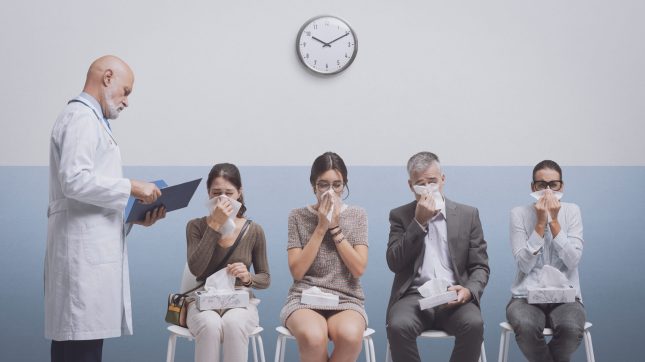
Nasal decolonization — it’s not just for the ICU.
Nasal decolonization is the manual cleaning of the inside of the nasal cavity in order to remove any pathogens colonizing the person’s nose, especially antibiotic-resistant MRSA. By decolonizing the nose, patients and staff alike are less likely to spread HAIs, making everyone in the healthcare environment safer.
Currently, the CDC’s infection control recommendations include targeted nasal decolonization in the ICU. But that doesn’t mean it can’t be put to good use elsewhere.
Learn more about the surprising use cases for nasal decolonization, and consider the potential benefits of expanding its use at your hospital.
1. Before Every Surgical Case
Leading healthcare organizations, including AORN, now support nasal decolonization for all perioperative patients, and for good reason.
Nasal decolonization is especially important for surgical patients, because most surgical site infections are endogenous, meaning the infection originates from bacteria already present within the patient’s body. Of those endogenous infections, 75% are associated with bacteria from the nasal cavity.
According to the American Journal of Infection Control, universal perioperative nasal decolonization reduced SSIs to zero among hip and knee patients, improving patient outcomes, saving the hospital nearly $400,000 in costs associated with SSIs, and increasing patient satisfaction.
2. In the Emergency Department
Many patients arrive first at the ER, sitting in the waiting room until doctors can evaluate their symptoms and place them appropriately. During those (increasingly long) waits, there’s yet another opportunity for pathogen transfer.
In the general population, approximately 2% of people carry MRSA in their noses. Those who carry MRSA are at relatively low risk of MRSA infection, but they can spread the bacteria to those around them. Since people of all ages come into the ER with varying afflictions, the door is wide open for MRSA to spread.
Even in the busy emergency department, self-administered nasal decolonization is feasible — and protects patients from contracting another infection while seeking emergency medical care.
3. Emergency Medical Service Vehicles
EMS vehicle disinfection varies widely from agency to agency, leading to inconsistent cleaning standards and a general lack of knowledge about EMS vehicle infection prevention.
Much like other first responders, EMS personnel experience higher MRSA colonization rates, due to their frequent contact with the community. 6.4% of EMS workers tested positive for MRSA colonization — a far cry from the general population rates. Unfortunately, paramedics who are carriers may inadvertently spread MRSA to their patients, even during a short ambulance ride.
With so many ambulance patients daily and the higher incidence of MRSA colonization among EMS professionals, nasal decolonization would provide one confirmed layer of protection against HAI transmission — even in one of the most uncertain healthcare environments.
3. Universal Nasal Decolonization
That’s right. Nasal decolonization could be part of the protocol in every department of a hospital.
For one, it’s extremely cost-effective. HAI care is expensive — costing hospitals $4.6 billion every year in the U.S. Targeted nasal decolonization also comes with higher costs, due to the need for frequent PCR testing. In a study of one hospital, researchers found that universal nasal decolonization saved over $1.3 million over the course of one year.
Universal nasal decolonization could also aid in the fight against antibiotic resistance. Since MRSA is already resistant to multiple antibiotics, doctors are limited in their treatment options and fear that the few remaining treatments may soon be obsolete. Proactively decolonizing each patient with an alcohol-based antiseptic minimizes HAIs and reduces our reliance on antibiotics.
Between the costs and labor associated with targeted nasal decolonization, universal nasal decolonization may soon be a key part of proactive infection prevention policies at hospitals across the country.
Universal Decolonization with SaniiSwab
The case for universal nasal decolonization is strengthened by leading-edge technology that is powerful enough to decolonize, yet simple enough for patient self-administration.
SaniiSwab is a two-step nasal decolonizing system that was invented by Dr. John Polley, an award-winning surgeon who practiced nasal decolonization on himself and his patients for decades. SaniiSwab is different from other nasal decolonizers, because it doesn’t add to nurse or clinician workload and provides extra protection against hospital-acquired infections.
Would simple, self-administered nasal decolonization reduce workloads and make better infection prevention possible at your hospital? Reach out to us to learn more about SaniiSwab for nasal decolonization.
